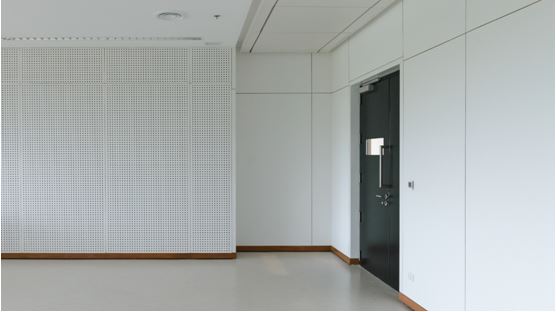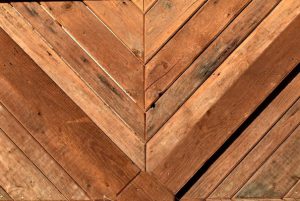
In homes, companies, and everything in between, soundproofing a door is quite beneficial. Regrettably, there are far too many recommendations for sound attenuation rather than a true obstruction.
To soundproof a door, either replace it with a solid core door or reinforce it with mass-loaded vinyl, soundproof blankets, and panels. Then, using a door gasket, door sweep, or spray foam, seal the holes to prevent air leakage.
Here are 12 detailed methods for soundproofing a door (in no particular order).
1. Seal the cracks with a door gasket
The sound usually magnifies when it passes across gaps. If there are any gaps beneath or around the doorframe, you might consider installing a gasket. They’re simple to install and completely eliminate noise that penetrates around the door.
To install a door gasket, you must remove the door frame. You may then align the gasket on the inside, seal the door frame, and be certain that sound will no longer enter via the open places. There are several door gaskets available, and the majority of them are reasonably priced.
2. Secure the door with a door sweep
Door sweeps have a solid metal and rubber construction. They make it possible for you to open and close the door without increasing the resistance. In the closed position of the door, you will not hear anything from the outside.
To install a door sweep, you just need to choose one that is the correct size for your door. Screws secure the door sweep in place. Ascertain that it is exactly aligned; otherwise, you will have to fill in the gaps or entirely repeat the installation.
3. Incorporate mass-loaded vinyl
Because dense bulk is the best at isolating sound, employing dense sheets of vinyl will prevent noise from coming through the door. The majority of doors, particularly those with a hollow core, dampen rather than eliminate sound.
You can put a mass-loaded vinyl inside the core of the door or on the interior of the door in the room. Typically, it requires sound dampening adhesive, which also eliminates some noise. Bear in mind that no sort of glue can completely stop sound; it just absorbs portion of it!
4. Make use of gap foam
Gap foam is only effective when you use a thick composition. As the gap foam expands, the bulk increases, forming a substantial barrier between the outside world and your room. The denser the foam in its ultimate state, the better.
Begin by spraying the foam around the inside of the door, gradually moving outward to cover any gaps. It’s particularly beneficial for hollow doorknobs, as the majority of them have holes running through them. Gap foam is best utilised as a final coat.
5. Cover the door with a soundproof blanket
If you place a soundproof blanket on the ground, it will not function unless you are attempting to stop sound from entering through the floor from below. However, if you want to keep the sound out, you may drape a thick fibreglass soundproofing blanket over the top of your door.
Fiberglass is well-known for its ability to insulate against sound. This is why we use it in homes, apartments, and recording studios. By draping a heavyweight soundproofing blanket over the top of your door, you may choose whether to block out the noise and when not to.
6. Install panels on the interior of the door
Perhaps the most effective option is to put soundproof panels inside your door. Soundproofing panels use solid, heavy materials that reflect sound waves in the other direction while absorbing the remainder of the impact. As a result, the system provides unmatched noise suppression 24 hours a day.
To install heavy mass panels, you must first devise a method of opening the door. Not by twisting the doorknob, but by physically splitting the door in half without causing damage.
You’ll be able to reinstall the door, reassemble it, and reinstall it in the frame. However, it is usually preferable to get a brand-new bespoke door.
7. Replace the existing door with a solid core door
Another alternative is to install a solid core door to block out noise. Hollow doors often perform substantially worse in terms of sound insulation due to their lack of bulk. However, you may drastically reduce noise by installing a new solid wood or metal door.
While wood is somewhat more dampening than blocking, it is still an excellent choice. While metal doors are excellent at deflecting sound waves in the opposite direction, several fire standards prohibit the use of heavy metal doors inside.
8. Construct a composite material that is soundproof
Composite soundproofing material is available for use beneath, within, or outside of a door. It is available in dense, thick sheets, making it ideal for shutting out all incoming sound sources.
You may use it as a doormat if it makes touch with the door rather than leaving a gap. Another option is to order a bespoke door that comes pre-insulated with sound-absorbing composite material. Additionally, you may simply glue or attach it to the exterior of the soundproofing room’s doors or anechoic chambers.
9. Cover your door with a fibreboard
Fibreboards are quite similar to soundproofing composite material in that they may be utilized either inside or outside the door’s core. However, because fibreboard is not as pliable as composite material sheets, it cannot be bent.
Fibreboard works best when used on both the inside and outside of the door, as well as when used to surround the door with strips around the cracks and corners. Open the door to reveal the core if possible and install a fibreboard there as well.
10. Invest in a soundproofing kit
This list has a plethora of possibilities, which may appear overwhelming. Consider purchasing a prefabricated kit if you want to bypass the installation decisions and get straight to the soundproofing procedure.
These kits include weather stripping, door sweeps, fibreboard, and composite material, in addition to the other components on this list. They are by far the most cost-effective and handy option.
11. Double door meeting stiles
If a room has a pair of double doors, it may appear hard to totally soundproof it. However, meeting stiles are an ideal option since they will seal the doors together once they come into touch. You have a variety of options, including rubber, composite material, and others.
To install a set of meeting stiles, just pick the appropriate size, screw the bolts into the locations where the doors meet, and test your work by shutting the doors. They function similarly to door sweeps, except that they are vertical rather than horizontal.
12. Acoustic thresholds for doors
Similar to door sweeps, acoustic windows or doors thresholds can keep noise out from beneath the door. Even if you use sealed gaps and the best heavy mass vinyl sheets, the area beneath the door frame is critical.
The main distinction between thresholds and door sweeps is that thresholds are put on the floor, whilst door sweeps are installed on the door. This eliminates the need to drag the door sweep over the floor while opening and closing the door. Thresholds are great for hard surfaces that would generate an obnoxious noise when a door is opened with a door sweep.

